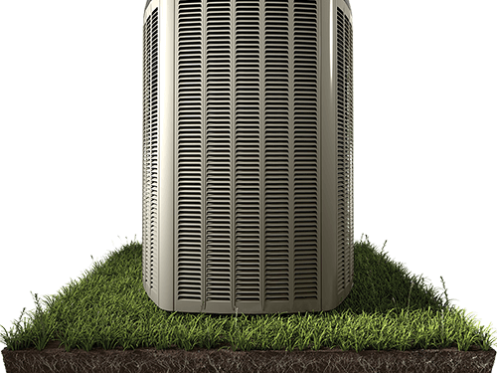The air conditioner is responsible for a large percentage of your monthly utility bills. On average, the AC consumes about 318 watts every hour in most American households. Since the AC will cycle its compressor on and off throughout the day, this amount is lower than it might be.
With an average of 318 watts every day, the system will consume about 228 kWh every month. You will pay about $27.36 if the rate of the electricity is $0.12 per kWh. This is lower than you would have paid 15 or more years ago when AC systems were less efficient.
What Determines AC Power Consumption in Your Home?
Although modern systems are efficient, there are several factors that affect their efficiency.
The first factor is the number of occupants in a room. The human body emits a great deal of heat. If there are 20 people in a room, they emit more heat than only three people would in the same space. If there are more people gathered together in a confined area, your AC will consume more power than when only a few occupy the space.
The difference in indoor and outdoor temperatures also determines how much power your AC consumes. If the outdoor temperature is high, your AC will consume more electricity to cool your home’s interior.
The size of the space to be cooled also matters. If you have a large home, you will need a large AC system to cycle the air between indoors and outdoors.
If you have many electrical appliances in your residence, your AC will also consume more energy to cool the space. These appliances generate a lot of heat and increase your indoor temperature. To bring down that temperature, your AC will need to consume more power.
The volume of the air you need to cool will determine how much power the system uses. If you open your cabinets and cupboards, you increase the volume of the air you need to cool.
When considering the efficiency of your AC, you need to consider the factors outlined above. Your AC could have the most efficient features, but if the area to be cooled is huge, the AC will consume a lot of power.
At Summit Heating & AC in Denver, we can help you size your AC system and optimize it for energy savings. Among other things, we’ll consider the volume of your interior space, humidity levels and regional temperatures when sizing your unit.
Features of Modern ACs That Make Them More Energy Efficient
Programmable and Smart Thermostats
Many AC units today feature a programmable thermostat. Whether you have a central air conditioning system or just a window unit, you will have a thermostat. In some units, the thermostat comes as a stand-alone unit that you install separate from your AC system or as part of the system in the form of the small display screen.
Programmable thermostats allow you to create a cooling schedule. You can set the unit to cool the house until the temperature gets to a certain level. After that, the thermostat turns down the AC to save energy. That’s how all thermostats work, but a programmable device can be set to come on or turn off at specific times of the day.
If you have a smart thermostat, you will enjoy even more savings. The thermostat allows you to control your temperature settings from your smartphone. If you are away, you can control your temperature online. The thermostat communicates with the Internet, and you can access it from there.
Better still, some thermostats come with sensors that detect movement and body heat. When no one is in the house, the thermostat setting is high, and when people are in the house, the thermostat goes into cooling mode.
High SEER Ratings
Modern AC units are generally designed to be more cost-effective, as you can see in their efficiency ratings.
SEER, short for Seasonal Energy Efficiency Ratio, is the main efficiency rating for ACs. It measures the efficiency of an air conditioner over a cooling season. Manufacturers test the cooling capacity of the AC in various temperature and humidity conditions. SEER is a rating for mini-split systems and large central air conditioning systems.
Traditional AC units offer a low SEER of about seven. Today, the minimum SEER an AC unit should offer is 14, and some units offer as much as 24.
Although the SEER of a unit is affected by regional variations in temperature, an AC with a high SEER rating is better than one with a low rating.
Variable Stage Motors and Two-Stage Compressors
Traditional AC units have motors that run on a single speed. This is an inefficient system because you cannot control the equipment’s rate of speed. Modern units allow you to vary the speed based on your cooling needs.
If you cut down the fan’s speed by half, you will have great savings in energy. After cooling your home to the desired level, you can reduce the fan’s speed to reduce energy consumption.
With most modern systems, you do not have to manually vary the speed of the fan. They use smart or programmable thermostats that detect temperature, humidity and other factors in order to vary the speed as necessary. The variable-speed motors ensure that you are not uncomfortably hot or cold, and you also save energy.
Two-stage compressors also have the same energy-saving capabilities. These compressors operate at appropriate capacities for differing situations. You can set them low or high. ACs that have a 2-stage compressor will run at the low-power setting most of the time and only shift to the higher setting when the need arises.
Older systems have one-stage compressors, which only run at a single power setting. Because you cannot vary the way they run, these systems have to cycle on and off repeatedly, and that consumes more energy.
Zoning and the Use of Mini-Split Systems
Instead of cooling all the rooms in your home, you can choose to cool only the ones you are using. This is referred to as targeted cooling or zoning. Even the rooms you are cooling do not all need the same level of cooling. For instance, the way you cool a sunroom should be different from the way you cool a living room. This sort of zoning control enhances the comfort of your home.
Mini-split systems are the best at zoning. Unlike other units, these feature a single outdoor AC but indoor units in every room. You can connect up to nine indoor units and a single outdoor unit. With these indoor units, you can cool only the rooms in use and keep the AC off in the other rooms. Modern mini-split systems are ductless. This means that you do not have to deal with issues such as leaks.
Even if you have the most energy-efficient system, there are still many factors that affect how much energy the system consumes. The best way to ensure the system consumes less power is to ensure you get equipment that is the right size.
Local Air Conditioning Experts at Your Disposal
At Summit Heating & A/C, we offer a full range of heating and cooling services. These services include installation, repair and maintenance of heating and cooling systems. Count on us to look after your indoor air quality needs as well. We also offer financing on new installations to new and existing customers with approved credit in the Denver Metro area. Call Summit Heating & AC today to ask any questions you may have or to arrange an in-home consultation at your convenience.


